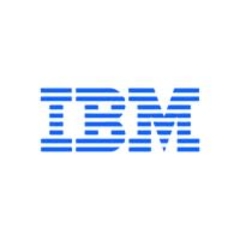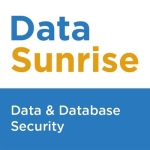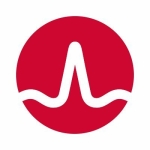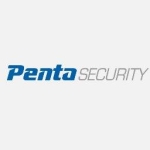What is our primary use case?
This solution is for database security and protecting the core of the data. It allows us to put in controls to make sure that only the right persons access the proper records in the database. It prevents unauthorized access.
For example, a customer may want to restrict the database so that it is accessible only from within a specific application. This means that the database administrator will not be able to access the data from outside of the application, as is normally allowed by their administrative rights. It can prevent the administrator from seeing or modifying any data for which they are not allowed to do so.
It is also possible to set specific permissions, such as restrictions on the field, table, or record level of the database. Only people with explicit permissions can view or modify the data.
How has it helped my organization?
One of our clients is a passport authority, and they were able to successfully apply this solution to detect corruption within their organization. There had been some employees who had been illegally changing the status of some residents in return for money. Once this solution was deployed, they detected that somebody was making those changes in the database, caught the people, and stopped it from happening again. It was a big finding.
What is most valuable?
This solution has a lot of functionality and there are hundreds of use cases for it. We are talking about the database, which is the main business core for the company that holds all of the data. The features used by any one customer are dependent on their requirements and the relevant regulations.
That said, IBM Guardium has a lot of capabilities, even compared to other solutions on the market. It can do everything from detection to prevention, and it provides reports about this as well.
What needs improvement?
The biggest complaint that I hear from customers and users is that using this solution requires database skills, yet it is a security and monitoring tool. Specifically, it is a tool that is used for monitoring the database administrator. The database expert will not want you to implement control on top of him, so you instead need to utilize a person from security. However, security people do not have a complete set of database skills. So, there is always a gap in the administration and the person who is going to manage this tool. As such, the person using this tool feels that it is complicated, doesn't know where to go and what to do.
I have heard that the latest version has better support, with better access, and a better GUI that is easier to use than before. At the same time, this is still one of the main concerns that I always hear from the customers.
The second most common complaint that I hear is in regards to the support from IBM. Some of the cases are open for a very long time because they do not have local engineers to come and look at the issues. In our region, my company is providing 24/7 support to help close these gaps. This has strengthened our presence in the market, but in other regions, this is still a complaint that customers have.
For how long have I used the solution?
More than six years.
What do I think about the stability of the solution?
The feedback that I have heard from customers, and my team, is that the solution is very stable. It does not require a lot of things after it is set up for the first time. Once it is fine-tuned, you do not need to do much other than generate and show reports.
At the same time, I do still hear complaints directly from customers about stability. Specifically, it has to do with making changes. If there is an S-TAP agent installed on the service then sometimes the configuration needs to be changed. This might be by adding a new rule or policy. After this, the server needs to be restarted. It is impossible to frequently stop and restart a service when it is in production.
My team justifies this by saying that it only happens infrequently, at a rate of perhaps once a year. However, the customers still see it as a very difficult task that makes their lives tough. Other than this, I have not heard any complaints about stability.
What do I think about the scalability of the solution?
This is a highly scalable solution, but it requires a lot of resources.
For example, I know of a big bank that has been a long-time user of this solution, but they were looking to replace it because they need forty-four Guardium severs in order to monitor their entire database farm. They feel that this is too much and will cost a lot. They do not have a new solution at the moment, although they are looking at other options.
Before this solution existed, people did not have really have anything in place. It was a new concept and it became critical when people came to understand database risks. In 2011 or 2012, many banks started to use Guardium, and since then, it has been spreading to other sectors such as government, transportation, and healthcare.
How are customer service and support?
The complaints that we have heard are about IBM support in general and are not specific to the Guardium solution. There are gaps because they do not offer local support in every region.
Which solution did I use previously and why did I switch?
I cannot recall an instance where a customer switched to this solution from another one that they already had in place.
We have been assisting people with migrating from earlier versions to the current version.
How was the initial setup?
The installation of the database, itself, is very easy and straightforward.
The initial setup involves configuring the database connection with Guardium so that it monitors it correctly. It also depends whether you want to deploy the protection method or not, which means that you need to deploy the S-TAP agent on the service where the database resides.
Beyond that, most of the configuration is in the policy, itself. This changes based on what you would like to monitor, what you want to prevent, and what kind of queries you want to block. For me, fine-tuning the policy is one of the most important elements of the implementation. It also depends on the customer's knowledge, and whether the customer knows exactly what he needs. Some customers want you to not only deploy the system but also to create the policy. You have to translate their internal policy into a configuration, which can really take a long time.
When you deploy using the basic implementation, it is usually only a week or two before you get complaints from the customer. They don't see the value in the solution because they are overwhelmed. So, fine-tuning the policy takes time, and it should be taken very seriously and with care.
If the customer knows exactly what he needs then the deployment can be done in two weeks.
In terms of maintenance, it does not require a staff member full time. One person can dedicate perhaps three hours a day for monitoring, reporting, and doing a health check of the system. We sometimes offer visits to customer sites daily or weekly. For example, we can assist the customer for two hours per week to monitor the system and ensure that everything is working properly. It really doesn't require much work.
What about the implementation team?
Because we are a distributor, we work between the partner and the vendor. When it comes to implementation, we can either assist the partner or work with the customer directly, based on what the customer wants.
Our Guardian expert is dedicated to that product, and will either visit the customer to perform the implementation himself, or he will align with a partner and they will go together. Most of the implementations are handled by ourselves.
What was our ROI?
I have not specifically calculated the ROI for any of our customers. However, I have shown them general ROI. For example, one incident of losing one record, either by mistake or intentionally by one of the admins, will cost you a certain amount. Moreover, it is important to consider how much you will pay to not have this happen again. These types of losses in the database may be critical data and can affect the company's reputation.
In general, deploying this solution will cost very little compared to the cost of losing data.
What's my experience with pricing, setup cost, and licensing?
In the past, the pricing of IBM Guardium was very complex. It was dependent on the number of CPUs and other things to support the servers. Nowadays, things have changed. Pricing is dependent on the number of databases and the number of servers.
The licensing fees are paid yearly. One of the deployments that I know of had three databases, and the yearly fees are approximately $50,000 USD.
There are some additional add-ons that are available, but I do not see many people taking them. There is encryption, and there is a Guardium Inspection license, but I am not sure of the costs.
Which other solutions did I evaluate?
The main competitor in the market is Imperva. They were originally not allowed in the Kingdom because of their country of origin, but they now have a local Saudi team. Some customers were approached by Imperva and did not know of Guardium, and simply went with that solution.
There is also a phenomenon in the market that is quite common when a new technology comes from the outside. Even if people don't have the full picture or details about the existing one, they feel that it is "old". Everybody has it, and they need something new. Because of this, we see a lot of people making the choice to go with Imperva.
What other advice do I have?
When it comes to implementing this solution, it is important for people to know exactly what they need to do. This includes what they need to monitor, what they need to protect, and what kinds of queries they want to prevent. They shouldn't rely on having this tool teach them what they need to do.
Next, people need to make sure that they are getting proper support. This can be from the vendor, by having an advanced SLA for example, or a strong local partner to help them. If they have any trouble, especially something urgent, then they want to have this support in place.
The third thing is to have somebody who is trained to take care of the system. Assuming that it is easy and that anybody can handle it will be the start of a larger problem. It will not seem too much at the beginning, but after a year they will be unhappy with the product.
It is important to recognize that there are several milestones for any Guardium project. Our consultant, for example, is an expert in that domain. He usually submits a project plan showing the implementation stages for the project. There are prerequisites that have to be put in place and verified, then Guardium deployed on the server. This can be either a physical or virtual server. Then the database configuration begins, which is followed by the fine-tuning phase. Finally, all of the appropriate documentation for these aspects has to be compiled. The length of time required for all of this depends on the requirements.
I would rate this solution an eight out of ten.
Disclosure: My company does not have a business relationship with this vendor other than being a customer.












